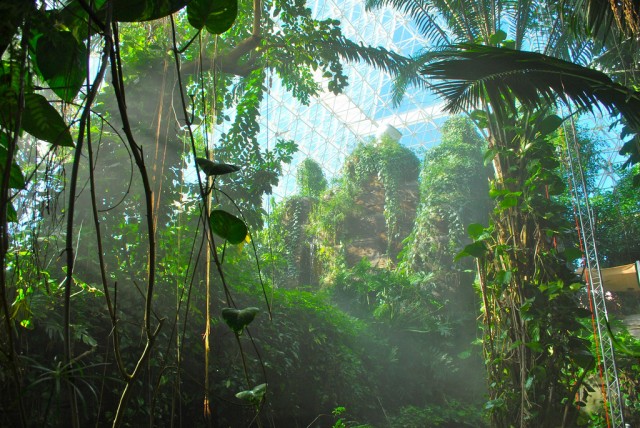Biosphere
THE ENVIRONMENT of the Earth can be broadly divided into four major systems: the atmosphere, hydrosphere, lithosphere, and biosphere. Russian scientist Vladimir Vernadsky coined the term biosphere in 1929. The term refers to the life zone of Earth that includes the air, land, and water occupied by all organisms including humans. This life zone distinguishes our planet from all others in the solar system.
The biosphere fulfills several important functions and processes to sustain life. These processes include the ways that solar energy and PRECIPITATION control biotic productivity, the interactions among various life forms, and how life forms have spread over the Earth's surface and adapted to various habitats. These processes are not limited to only the biosphere, but are the result of complex interactions between all the major systems (the atmosphere, hydrosphere, and lithosphere).
For example, the biosphere is both a source and sink for several important atmospheric trace gases and environmental pollutants (methane and nitrous oxide, for example). It is an essential factor in determining the budget, abundance, and distribution of trace gases in the atmosphere. Different types of forests create different atmospheric conditions that influence climate and ecosystem functioning. Chemical reactions critical to both life and atmospheric processes include photosynthesis and respiration.

Water is essential for all living organisms, and the biosphere plays a crucial role in the transportation, transformation, and redistribution of water on local and regional scales. In terrestrial ecosystems, vegetation plays the primary role in transferring water from the soil to the atmosphere. The biota exerts measurable effects on water quality through recycling of nutrients and absorption of air and water pollutants. Biospheric processes are also evident in the lithosphere. Root growth and the generation of organic acids aid in chemical and mechanical weathering of soils and geologic materials. Decomposition of organic material add nutrients to the soil.
The biosphere is based on the hierarchical concept of a food chain. Primary producers (plants), herbivores, carnivores, and decomposers all interact to create food chains. Organisms are linked to their environment and their relationships with other organisms as energy and mass are transferred from one level of the food chain to another. All life is dependent upon the first tier of the food chain, the primary producers or plants. The amount of new energy acquired by plant life in a given time is the primary productivity of that unit.
The biosphere can be divided into distinct ECOSYSTEMS based on the interactions between organisms, the local food chain and their habitat and measured in primary productivity. This creates geographically diverse areas in the form of different physical environments (ecoregions), physiognomic types (BIOMES) and floristic and faunistic (biogeographic) zones. Primary productivity influences the number and type of animals that can live in a particular area. The quantity and variety are greatest where conditions are best for plant growth but decline under harsher conditions. The variety of these natural areas are represented by mountains, plains, coastal regions, islands, inland forests, deserts, tropics, tundra, polar areas, and oceanic realms.
Humans are also part of the biosphere. Human activity and impacts have led to changes in habitat and a reduction in biodiversity. Biosphere reserves have been created to demonstrate integrated management of land, water, and biodiversity in a coordinated network of protected areas. These reserves are characterized by a diversity of plants, animals and microorganisms and healthy natural ecosystems integrated with human systems and activities. Addressing the relationship between natural processes and human activities has been a critical aspect of understanding sustainable use by humans of the biosphere.